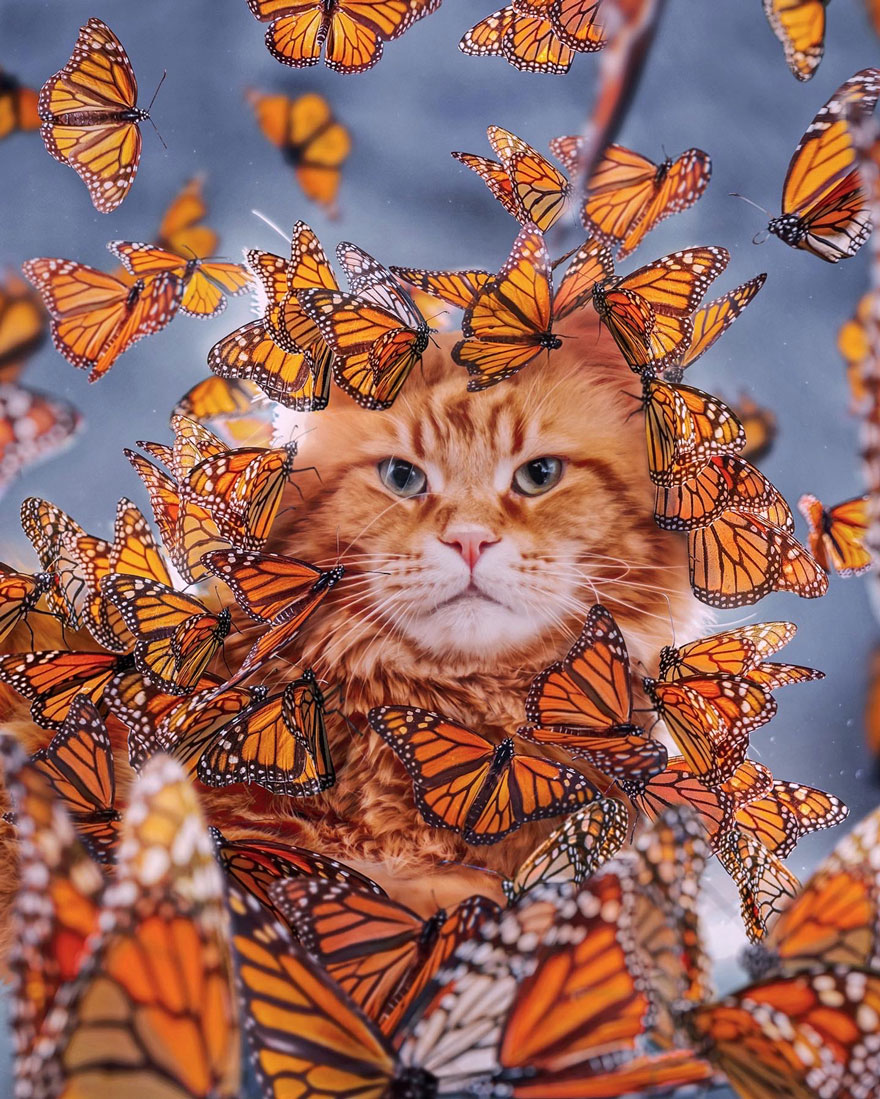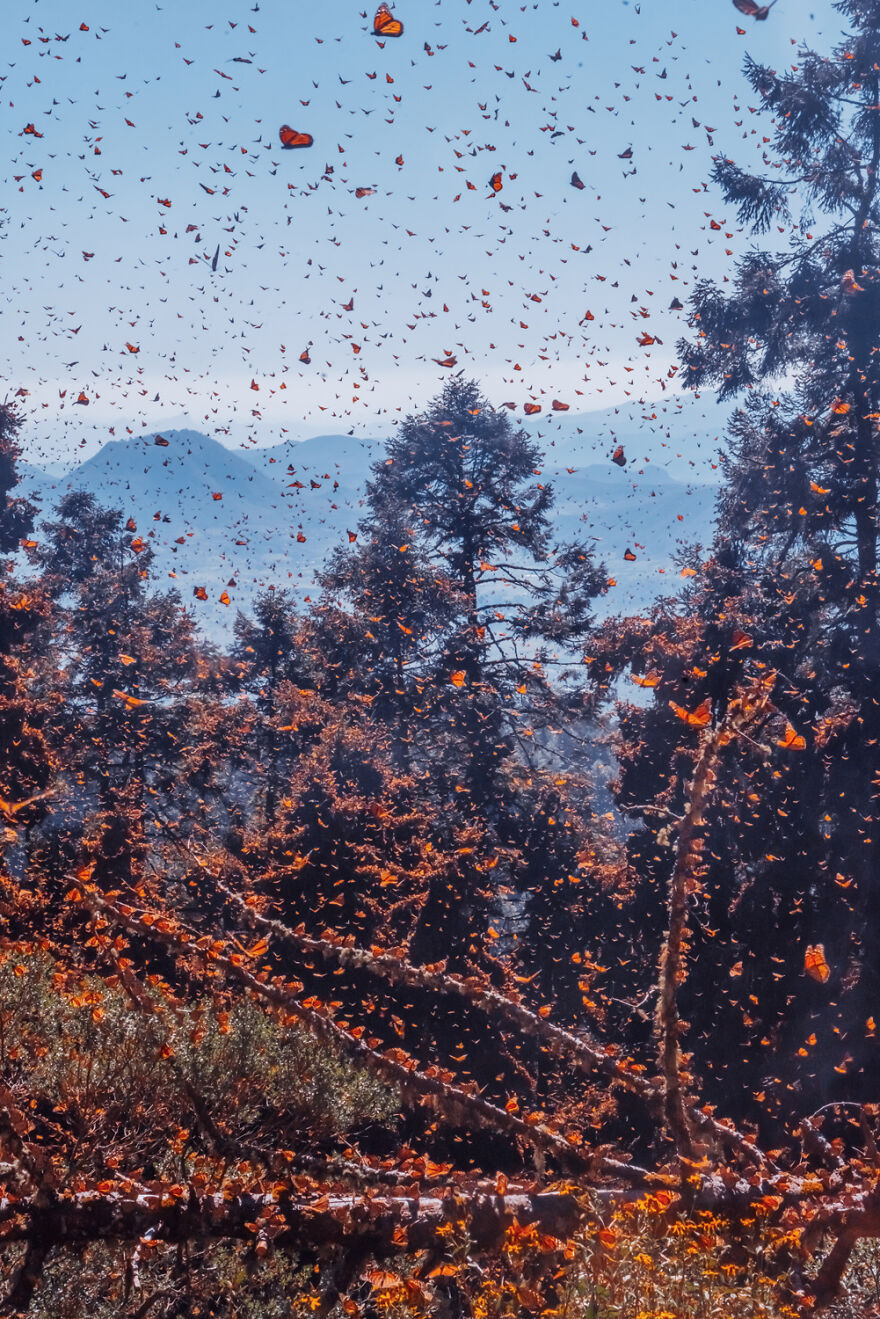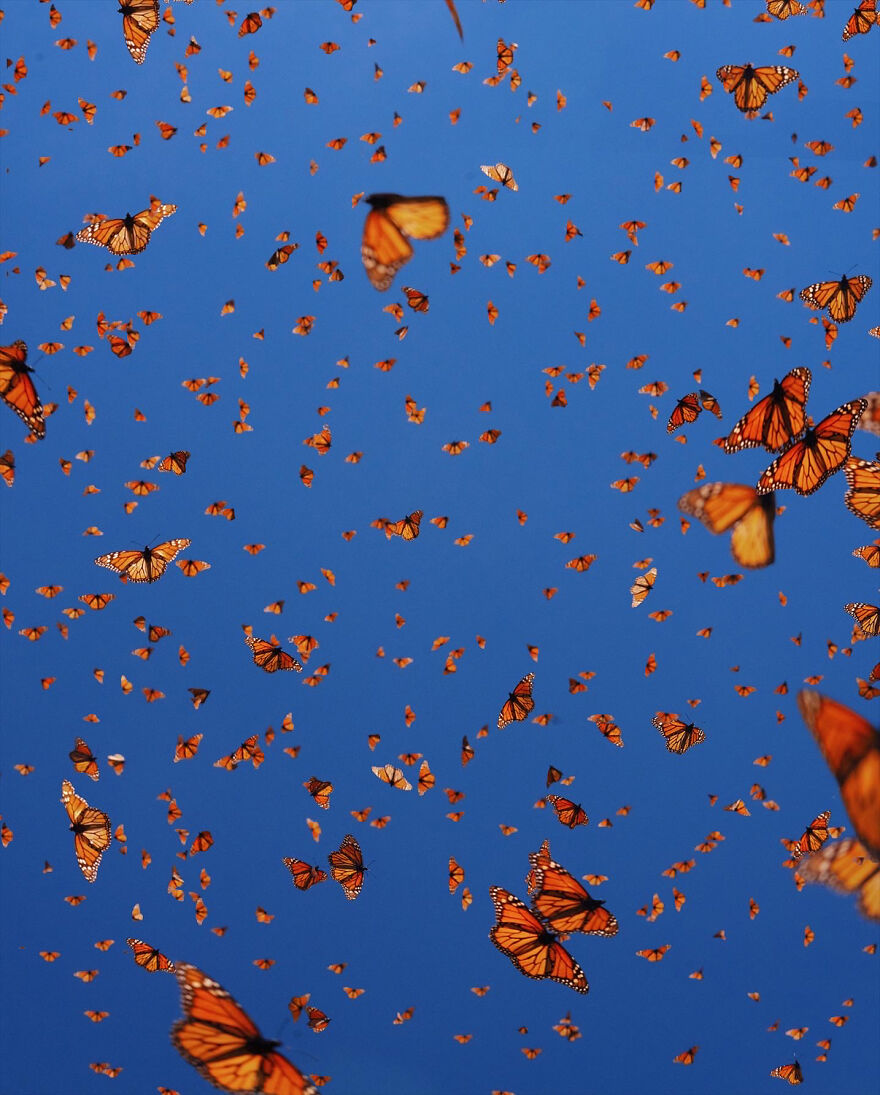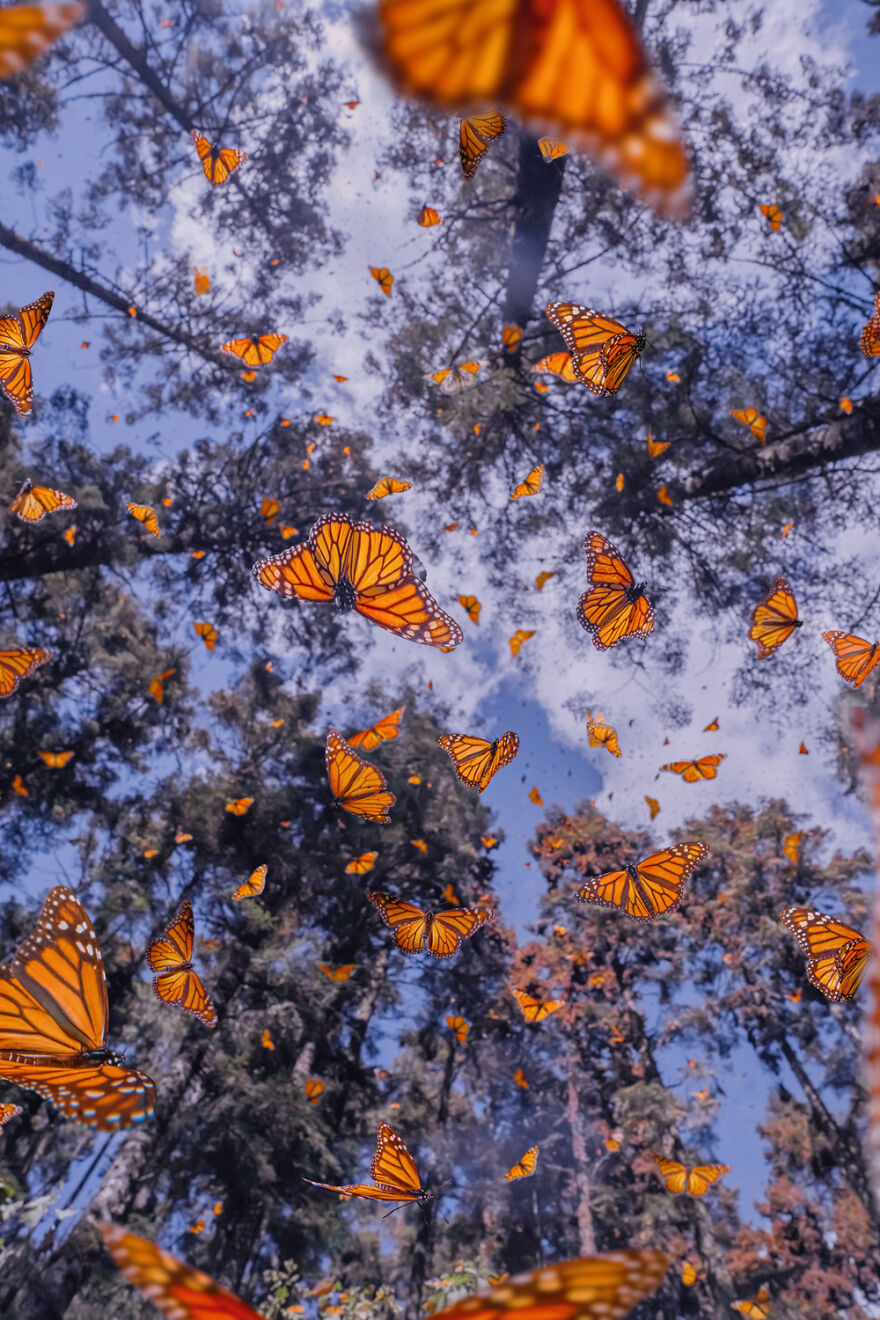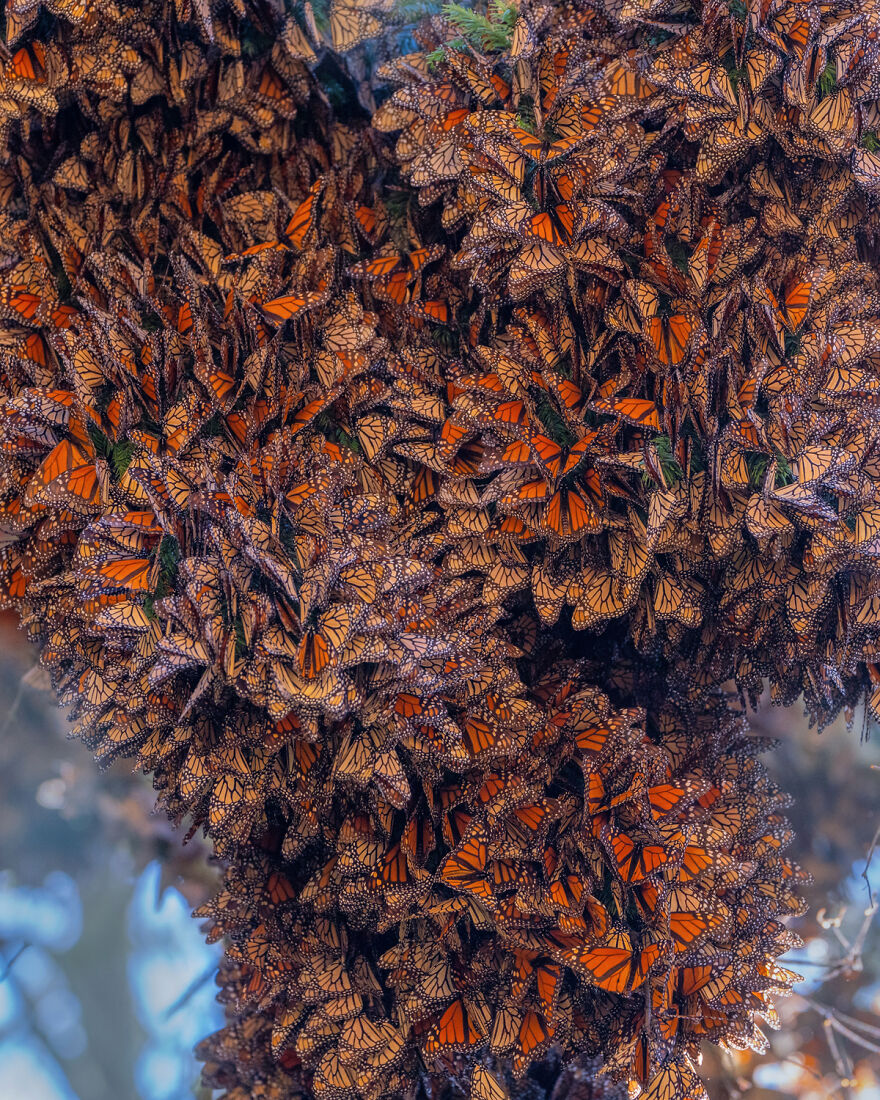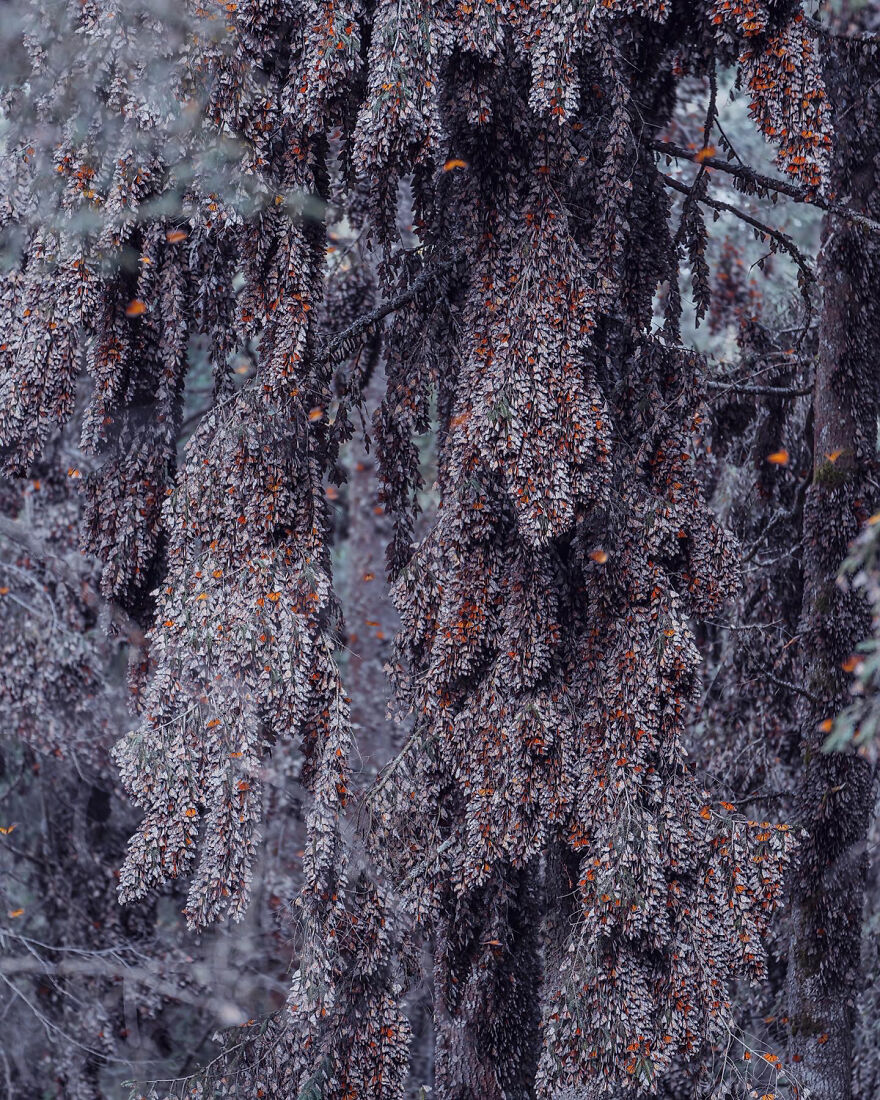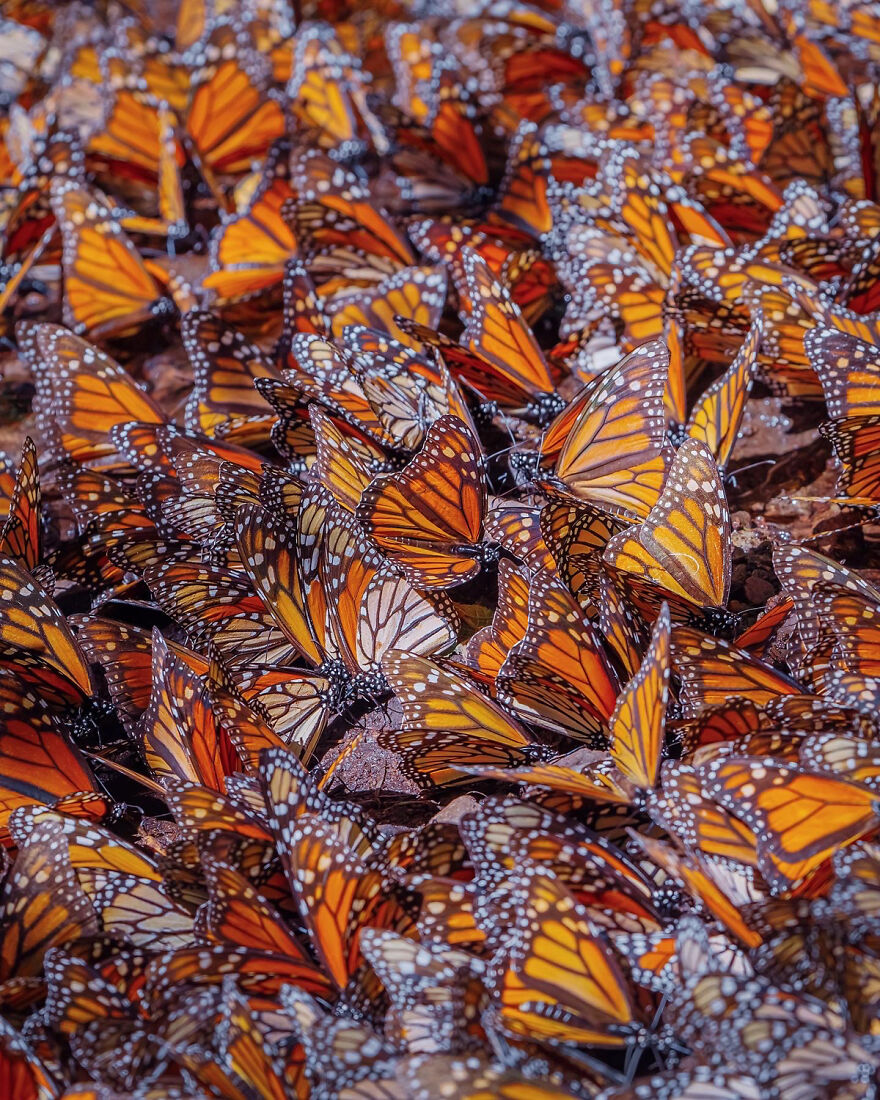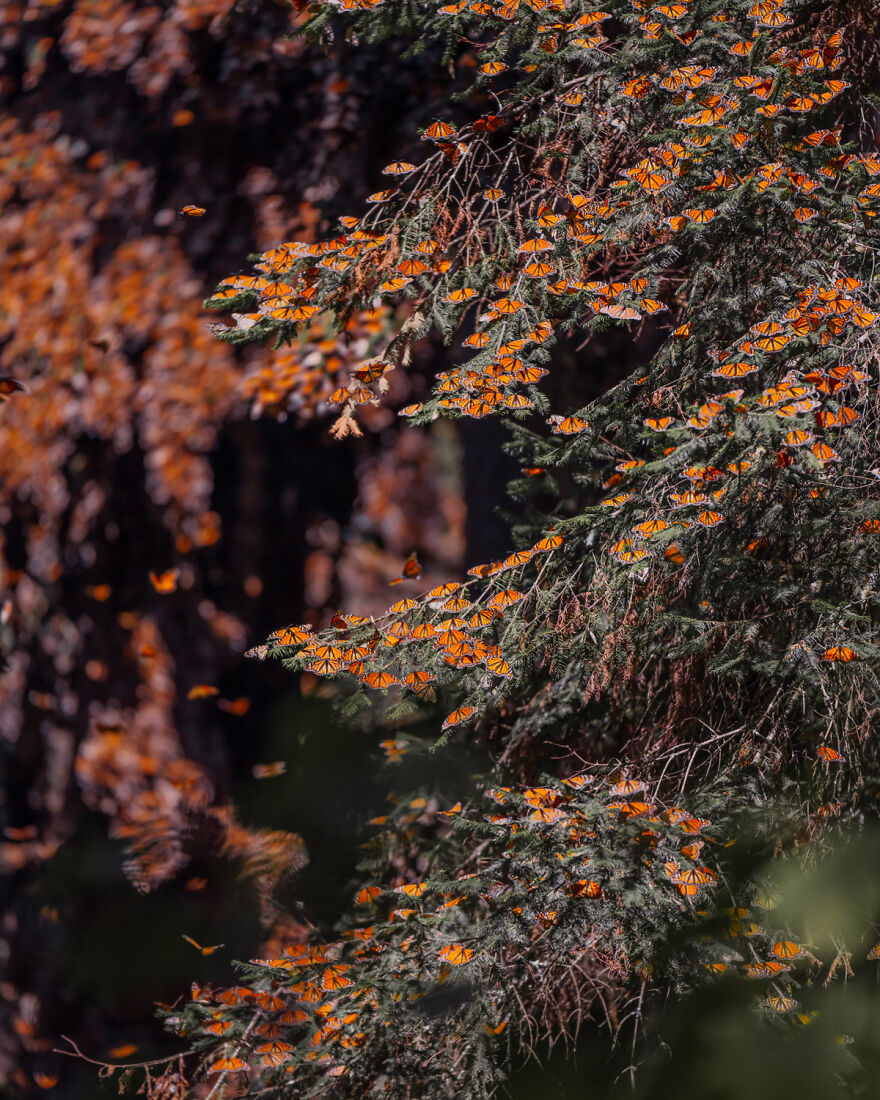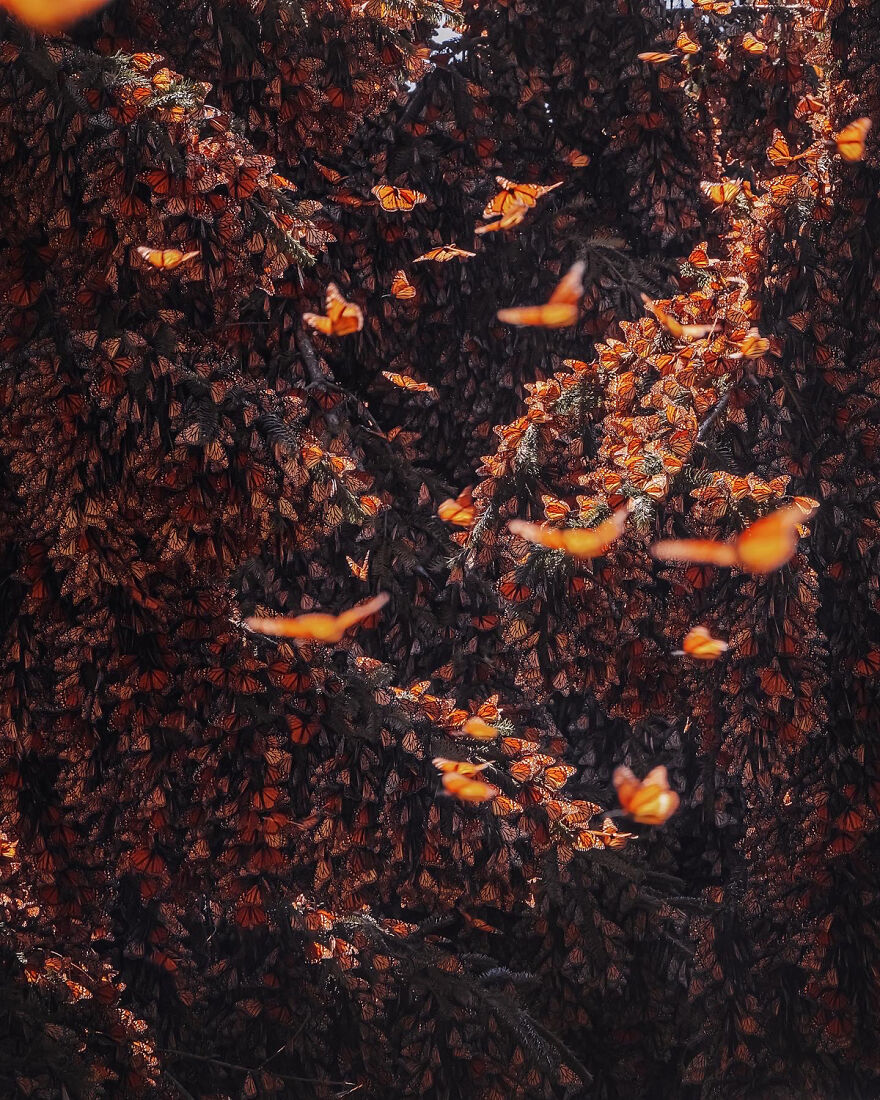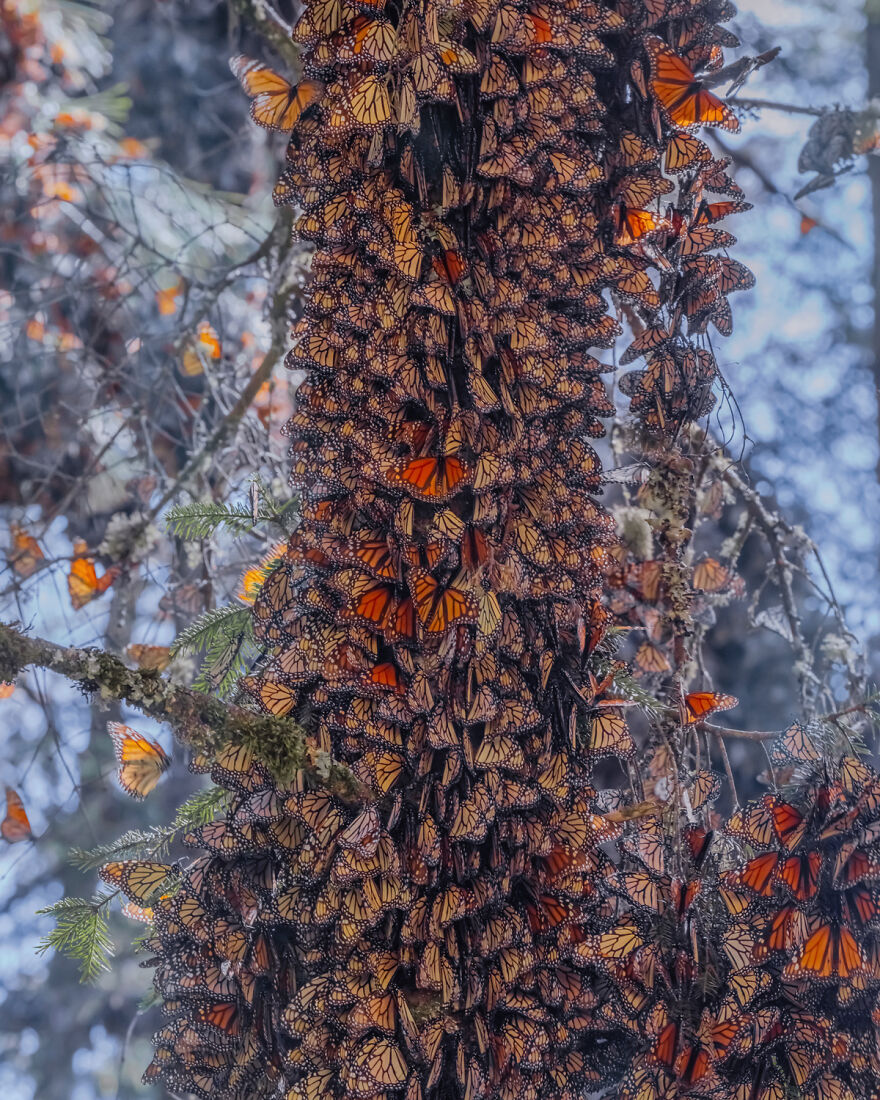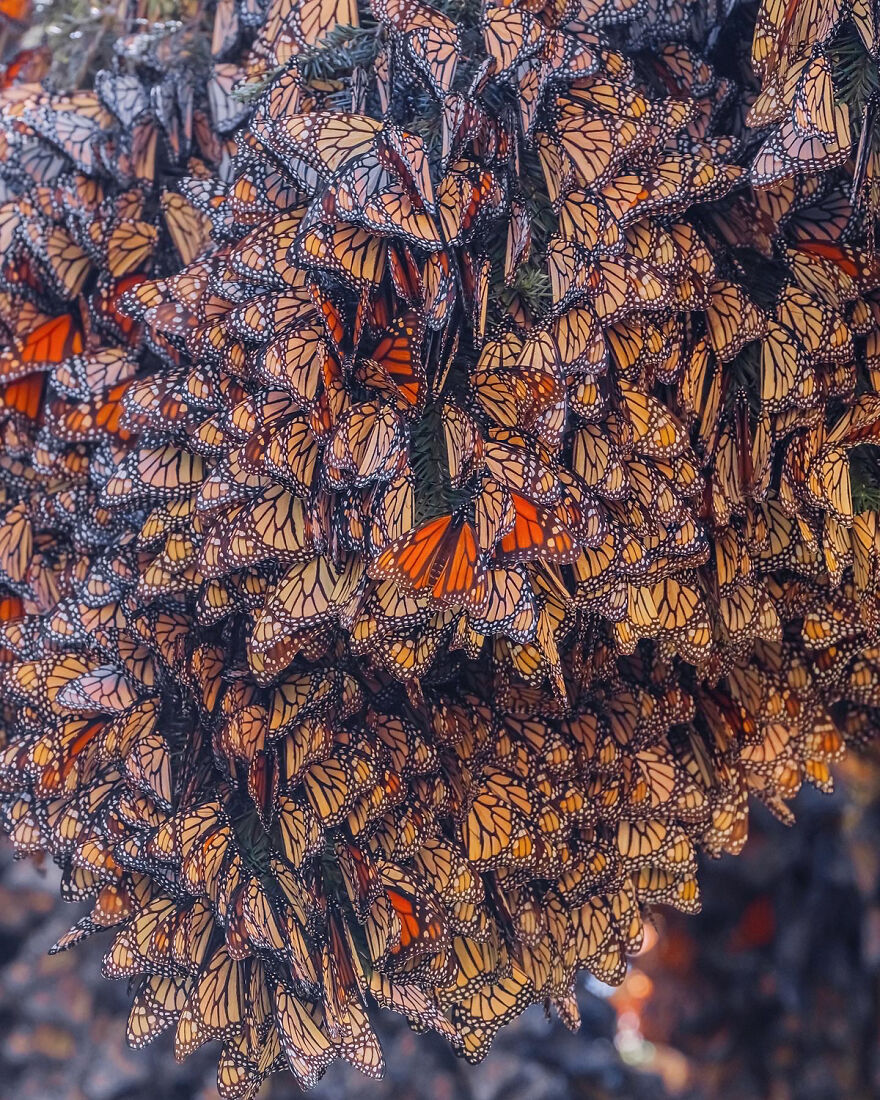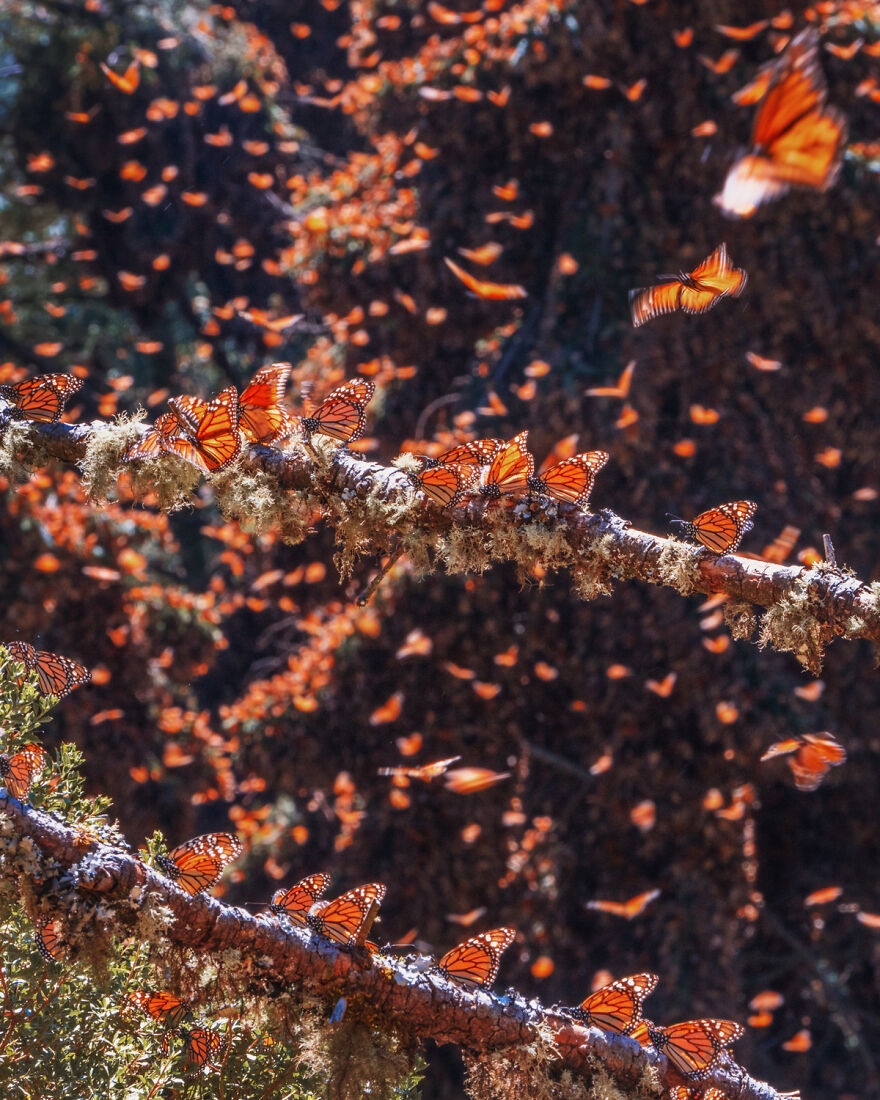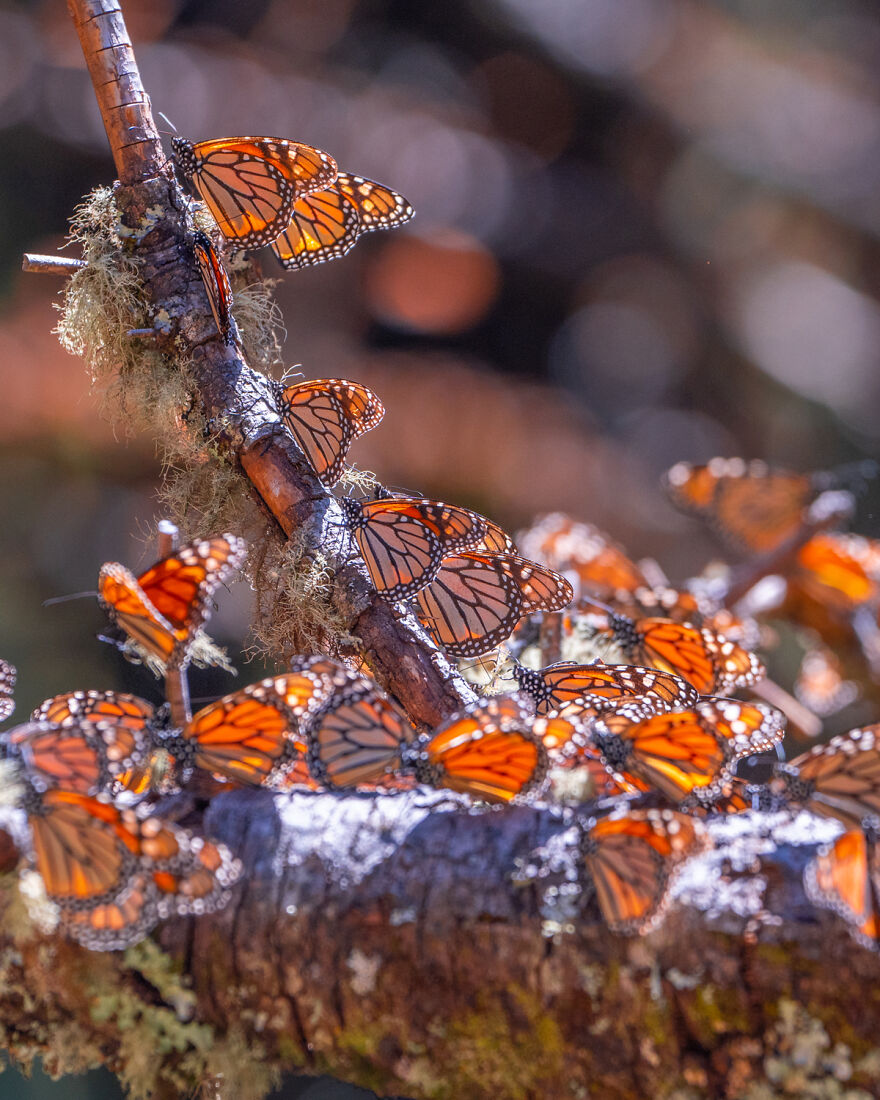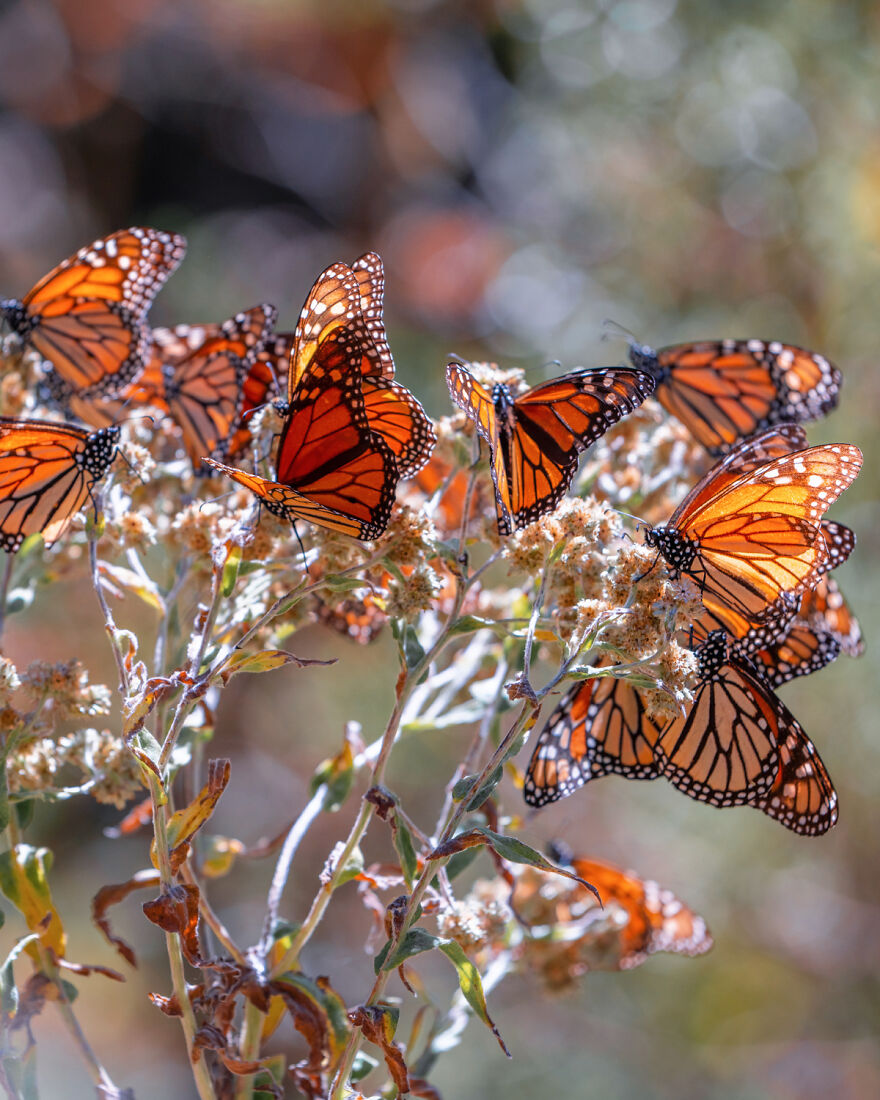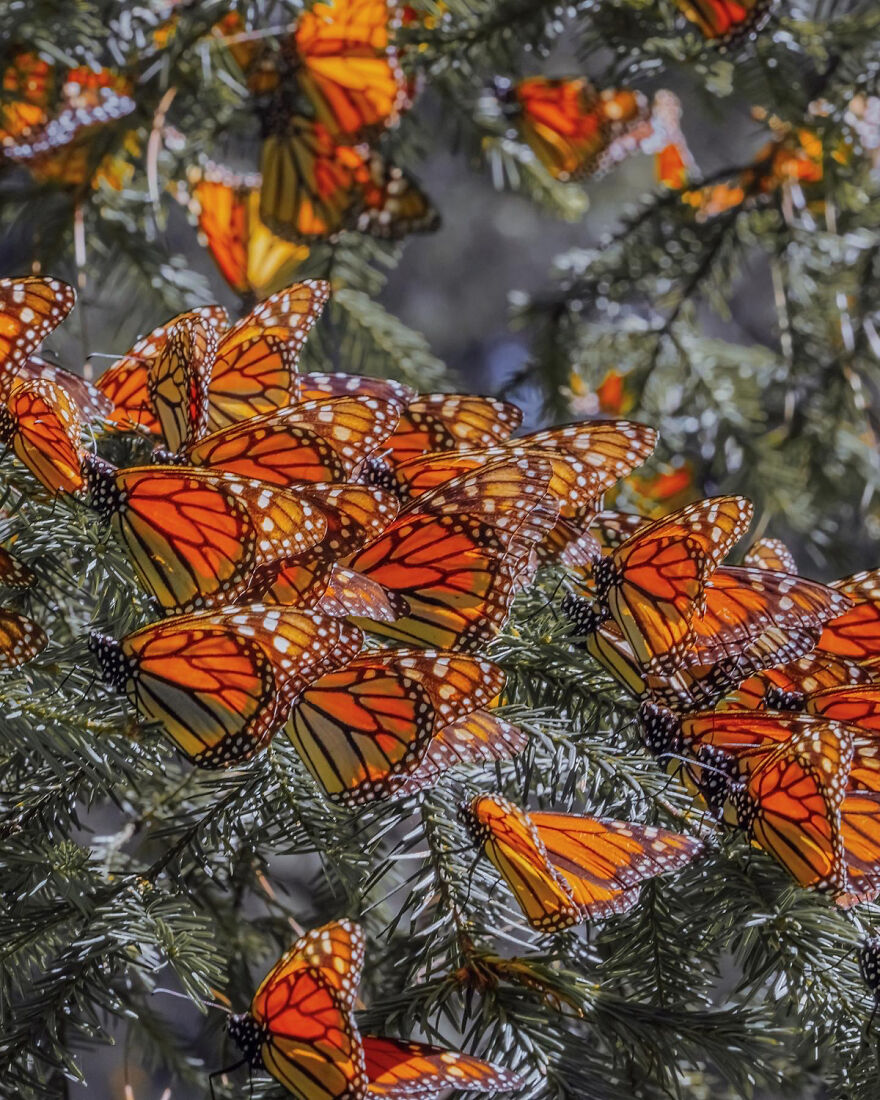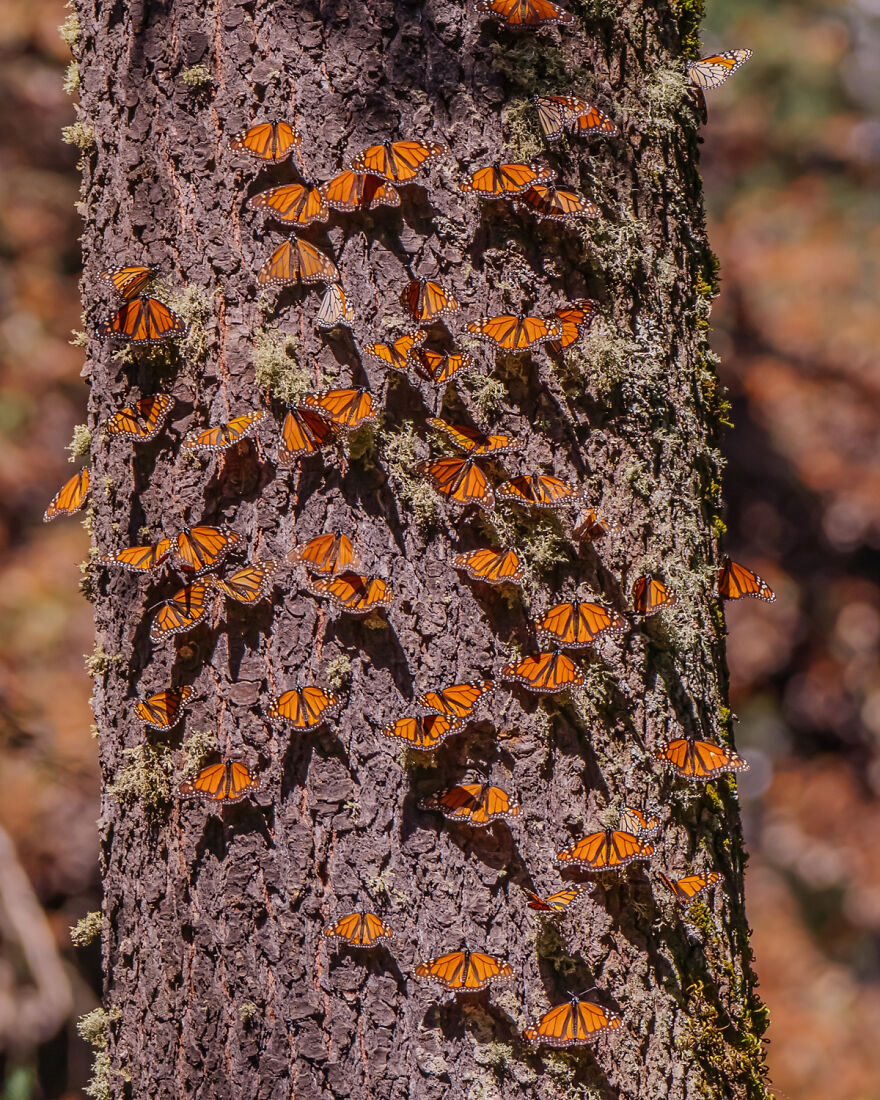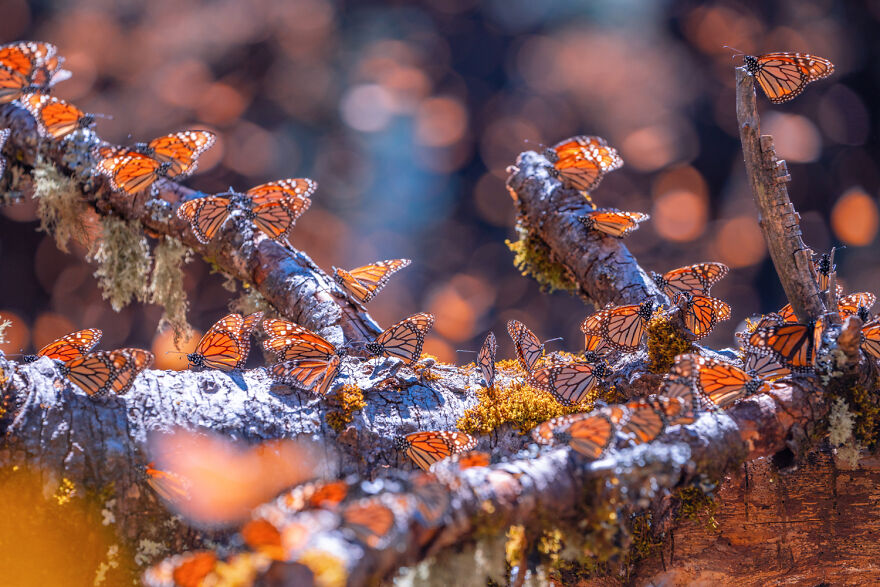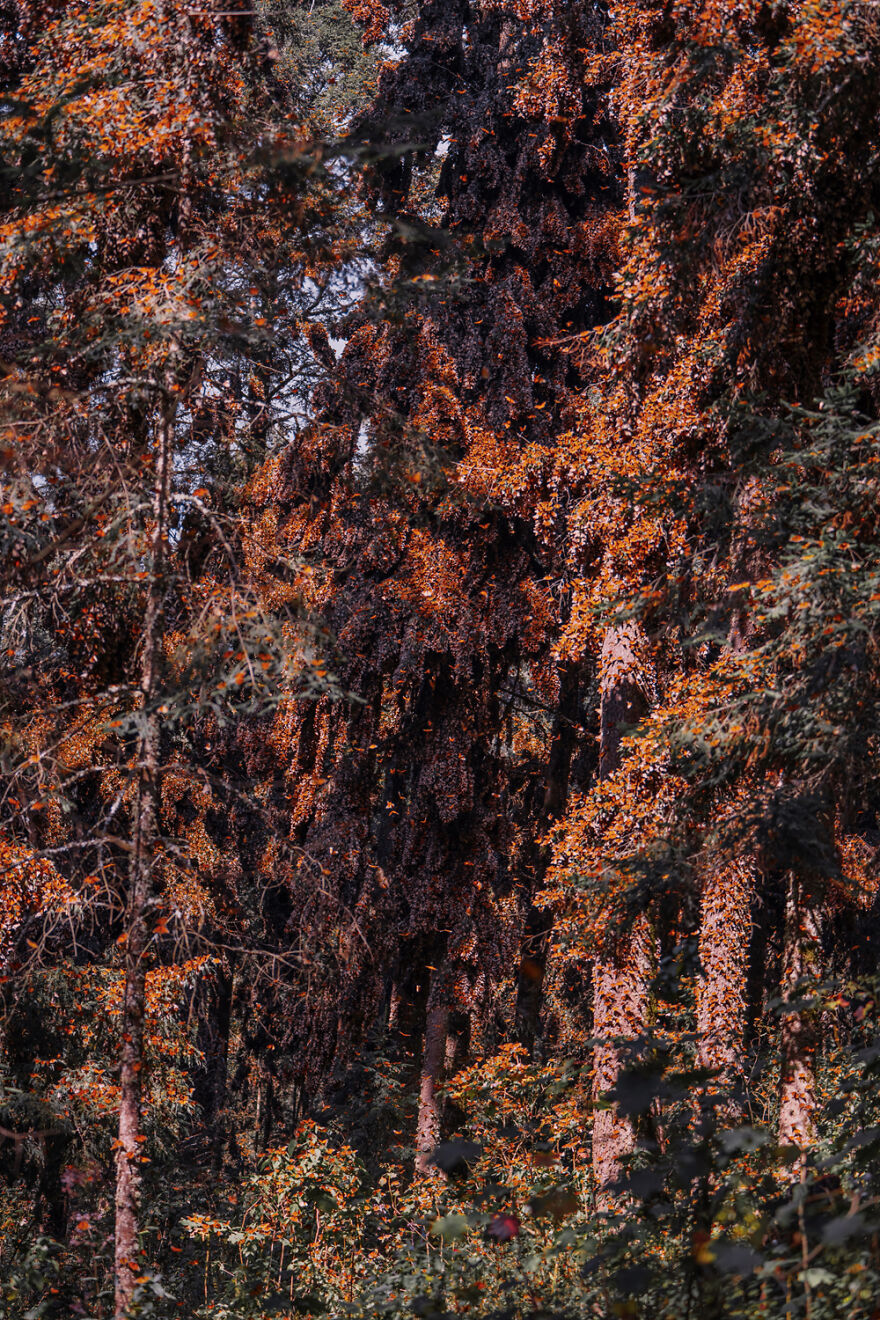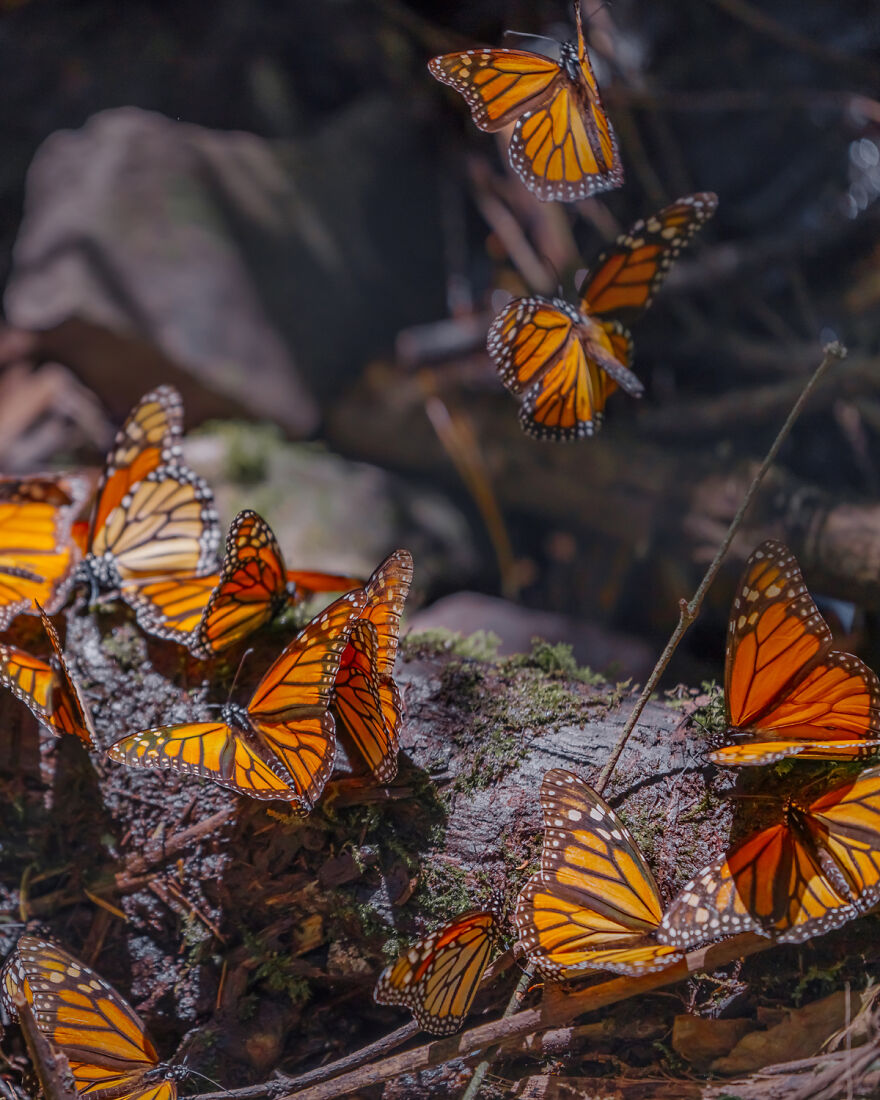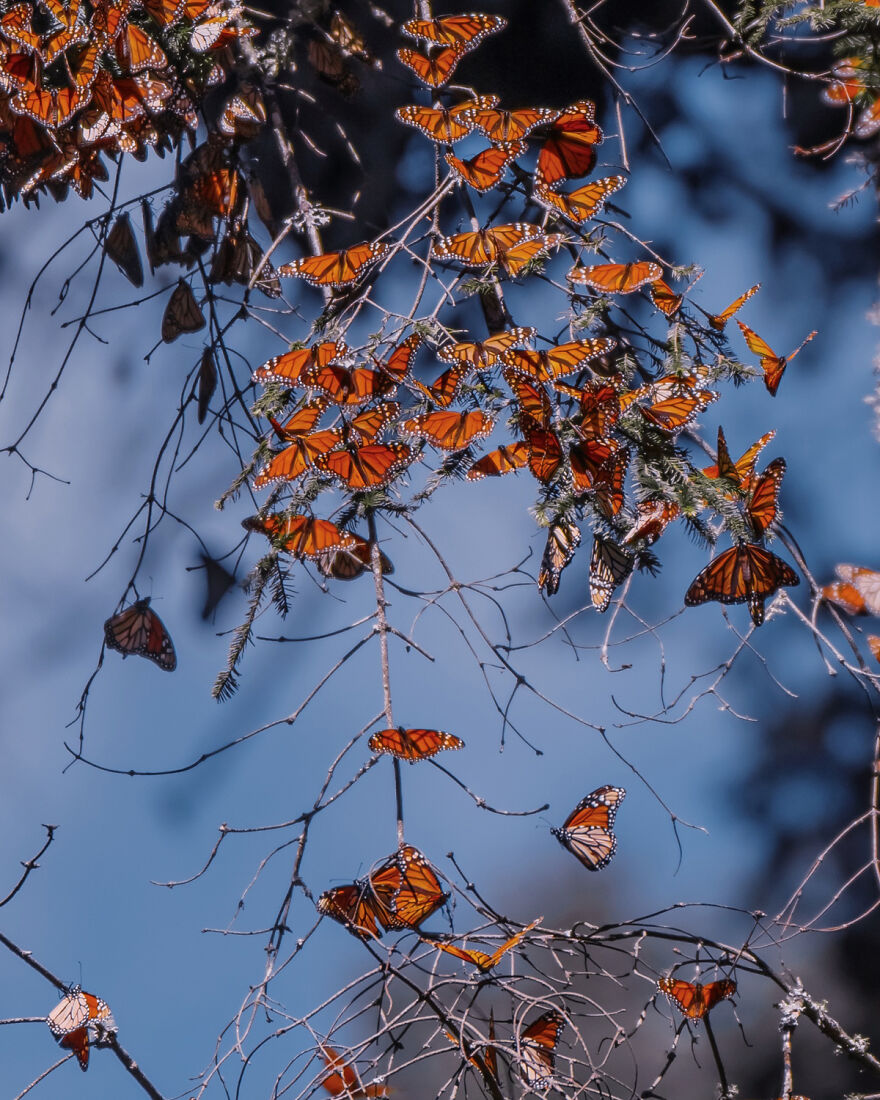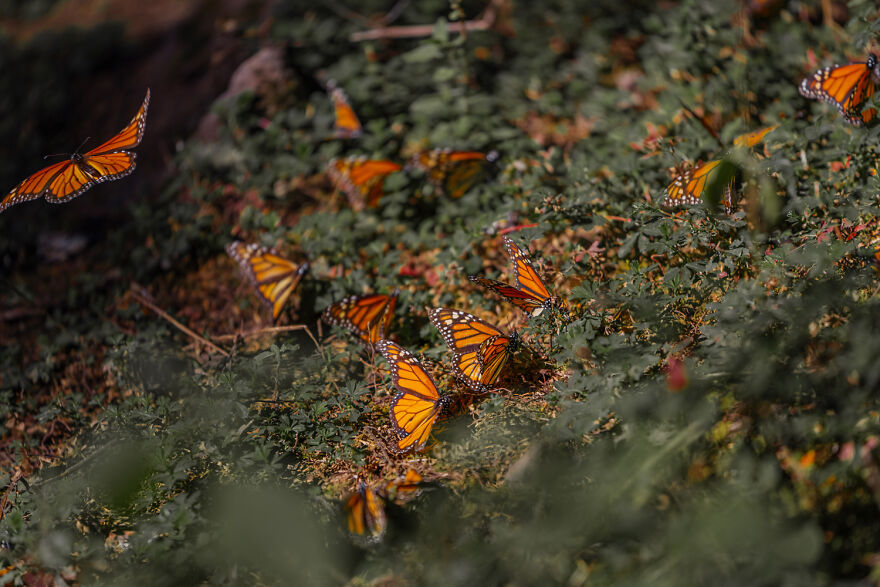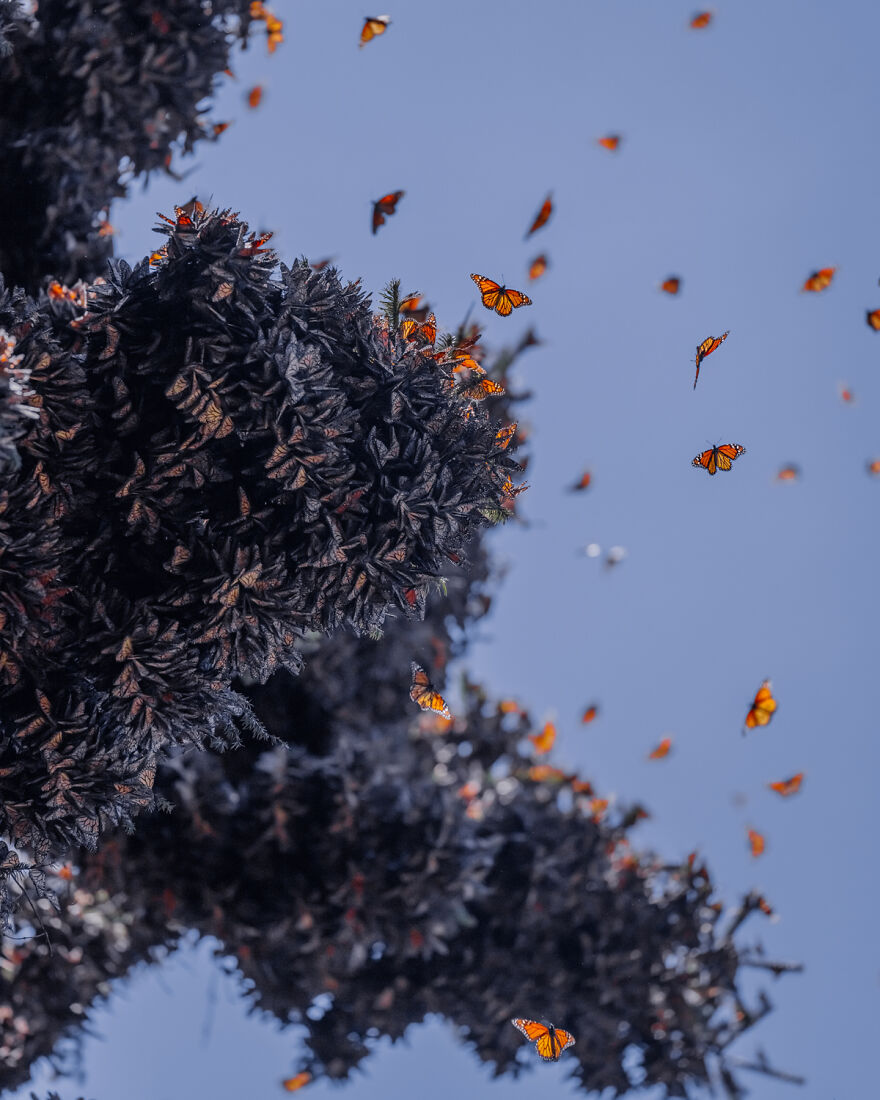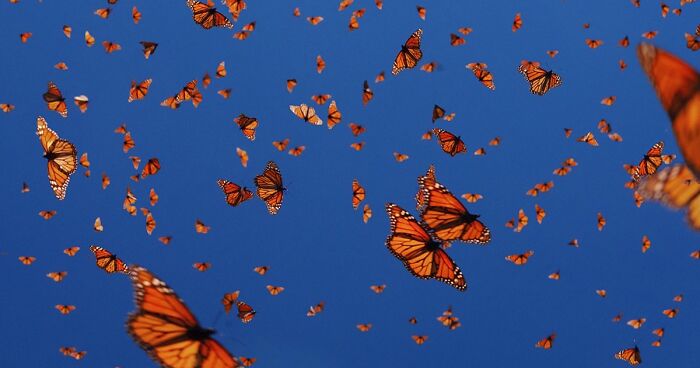
I Went To The Monarch Butterfly Biosphere Reserve In Mexico, And Here Are 23 Pictures I Took
One day I found myself in a dream. I still can't believe that I spent several days among hundreds of thousands of these beautiful creatures in Mexico. This amazing butterfly is called the danaid monarch. It is the only butterfly that migrates. From North America, thousands of monarchs fly to Mexico every year to spend the winter, breed, and fly back. The duration of the flight is much longer than the duration of their life, and the butterflies often return after wintering already in the second generation and flown away. Great-grandchildren.
Those butterflies that are born at the beginning of summer live for 2 months, but those that were born at the end of summer and are going to fly for the winter enter a special phase of existence - diapause. The non-reproductive phase of life, when butterflies are in a physiological state of torpor that slows down the aging process, allows monarch butterflies to survive the winter. Therefore, all those butterflies that are in the Biosphere Reserve in the State of Michoacán do not really live a full life but are in a daze. Although they fly very actively.
More info: Instagram | Facebook | hobopeeba.com
This post may include affiliate links.
My name is Kristina Makeeva @hobopeeba. I am a photographer and traveler, and my main task is to show people every day that the world is full of wonders. Often, people forget how beautiful it is and fall into apathy, but once you learn to see it, life will immediately become much more colorful and happier. Magic is in the simple things.
Those are Monarch Butterflies, right??? We do not have them in Europe as far as I know, except in some tropical zoos/facilities.
We arrived in Mexico just to watch the migration of Danaida Monarch butterflies. I had kept this place in mind for a long time, and it was one of my goals - to see it with my own eyes and show it to my followers. Of course, we saw the beautiful nature of Yucatan and the capital of Mexico as well before we flew to the mountains where the butterflies live, but the main goal was to come here.
Simply beautiful, the lady is beautiful, the butterflies are beautiful, the whole mood of this photo is beautiful, compliment to the photographer.
The main difficulty when photographing butterflies is that they are often high up in the trees and to capture them, you need a long lens (from 200mm). Also, on a cloudy day, butterflies do not fly, and sit with their wings folded on the trees, and if you come on one of these days, you will be very disappointed. Monarchs need the sun to warm up and start fluttering.
this one is by far my favorite and in my opinion the most majestic&beautiful
I have 4 favorite photographic projects in my life - these are about girls around the world in flying dresses, about Lake Baikal, about an African princess, and about my royal cat Cutlet. Moreover, each of these projects was greatly liked by my viewers too. If you want, you can easily find these designs here on Bored Panda.
I am always very grateful when you leave me feedback about my work, whatever it may be. That gives me the strength to do new magical things for you.
I do not recommend visiting the reserve on days without sun - at this time, butterflies sit on branches and are motionless on each other. They need to warm up to fly. Many tourists leave disappointed if they come in cloudy weather.
In the spring, after the butterflies wake up, they produce offspring. The stages of caterpillar and pupa last about two weeks, then adult butterflies - descendants of insects migrating in autumn - return to their habitats. On the way, the butterflies lay their eggs and then die, and the flight is continued by their children, who also breed during the migration. Great- and great-great-grandchildren of butterflies that flew away to warmer climes in autumn return to their homeland. The second, third, and fourth generations of insects return to the northern regions of the United States and Canada.
our garden is designed to attract and grow butterflies , in the summer, its we have lots of different ones, not lots like in these images but lots, monarchs, red admiral, cabbage whites, some purple ones, some white with an orange tip, just beautiful. All the plants are for them and the bees and we have berry trees for the birds, we designed it all for them and its on going
The danaid monarch is one of the few insects capable of making flights across the Atlantic Ocean.
The most numerous populations are found in North America. This species is found in Africa, Australia, and in some European countries such as Sweden and Spain. Monarchs can be found in the extreme southwest of Great Britain, on Lake Bennington, in Walla Walla, Washington, the Far East, New Zealand, North Africa, and the Hawaiian Islands. Settled danaid monarchs live in Bermuda, Florida, Arizona, and the Caribbean region, as there is a mild climate all year round.
It is often asked why such a cluster of monarchs are not eaten by birds. The milkwort, preferred by caterpillars, is poisonous and disgusting in taste to birds. There are a lot of cardenolides in the juice of the milkweed - substances that are not only unpleasant for bird taste but also cause nausea in small concentrations, while a large dose can cause a heart attack.
The poison obtained from the leaves of the plant is stored in the body not only in caterpillars (the fact that the caterpillars are poisonous is evidenced by their bright color), but also in butterflies, being distributed throughout the body. Therefore, butterfly colonies that are in suspended animation survive, as birds prefer to feed on less poisonous insects.
I liked every photo here, they were so lovely! Stunning pictures and honestly you're so lucky to see them in all their beauty.
Seriously tho, this is the best photo collection I've seen in a while.
This is one of the great mysteries of life on this planet. When I was earning my Master’s degree in Entomology back in the 1980’s, researchers were still trying to keep this location a secret (I had the privilege of meeting them), but now the genie is out of the bottle and the battle is on to try and keep this amazing phenomenon relatively undisturbed. The evolutionary puzzle has to do with the fact that the adult Monarch butterflies migrate northwards in the US and beyond, then reproduce and die. But because they are multivoltine it is the butterfly’s *grandchildren* that somehow “remember” to pack up and migrate back down there. And they know just where to go every time! How??? Sadly, with habitat destruction (especially of pastures with milkweed host plants), light pollution, climate turbulence, and the new neonicotinoid pesticides, the Monarch butterfly is up against daunting challenges for survival. Once their numbers drop below a certain threshold, their huddle-up thermoregulatory adaptation will begin to falter.
And by the way, the overwintering adults in Mexico number in the millions and millions, not thousands. 🙄
Load More Replies...Loose lips sink ships. Please don't go. There are butterfly exhibits in most major cities. Go there and use your imagination.
Shame there's 2 photoshopped pictures (cat and woman) the others are perfect and really show how amazing nature is
This is one of the great mysteries of life on this planet. When I was earning my Master’s degree in Entomology back in the 1980’s, researchers were still trying to keep this location a secret (I had the privilege of meeting them), but now the genie is out of the bottle and the battle is on to try and keep this amazing phenomenon relatively undisturbed. The evolutionary puzzle has to do with the fact that the adult Monarch butterflies migrate northwards in the US and beyond, then reproduce and die. But because they are multivoltine it is the butterfly’s *grandchildren* that somehow “remember” to pack up and migrate back down there. And they know just where to go every time! How??? Sadly, with habitat destruction (especially of pastures with milkweed host plants), light pollution, climate turbulence, and the new neonicotinoid pesticides, the Monarch butterfly is up against daunting challenges for survival. Once their numbers drop below a certain threshold, their huddle-up thermoregulatory adaptation will begin to falter.
And by the way, the overwintering adults in Mexico number in the millions and millions, not thousands. 🙄
Load More Replies...Loose lips sink ships. Please don't go. There are butterfly exhibits in most major cities. Go there and use your imagination.
Shame there's 2 photoshopped pictures (cat and woman) the others are perfect and really show how amazing nature is

 Dark Mode
Dark Mode 

 No fees, cancel anytime
No fees, cancel anytime 






